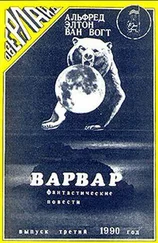And the priest throws water on their shoulders.
Immediately the demons begin to wake up. We shall see what we see. And in fact, the scuffle is getting farther away from the platform.
After a quarter of an hour of renewed fighting and fresh buckets of water, the group is clinging to the bottom of the steps. Once more for and against. The people on the steps and on the platform show they are determined to repel every attack. Nothing, as far as one can see, has been gained, when all of a sudden, in one second, the coffin is passed like a cigar. It is there on the platform. But alone.
The demons have been pushed back. One has fainted. A half-dozen are stretched out, their backs on the grass, unable henceforth to aid a dead man to go in one direction or another. However, after a half-hour’s rest, the corpse, escorted anew, must again be delivered up to the assault of the demons, and transported to the place of cremation.
However, at the supreme moment of the incineration, nine-tenths of the people have left.

Balinese women have more breast than expression. After a time at Bali, one ends by looking at the men.
The European who sees bare breasts cannot help thinking that something is going to happen. But nothing does happen. So he gets accustomed to it.
I am deeply convinced that I would accustom myself very rapidly to seeing these women completely nude.
A breast hardly expresses anything. It is the face that one consults to know the kind of character one is dealing with. The women, in fact, among themselves look each other in the eye, but they do not look at each other’s body.
The breasts of the Balinese women are beautiful, well, that is all. And very much in harmony with their pleasant, not very expressive faces.
I remember having been struck and disillusioned many a time in France by the fact that a woman’s breasts, when I happened to see them uncovered, were only beautiful, while the face was so wrought by intelligence, by a soul so odd and so exceptional, that I had been persuaded somehow that the breasts too would be exceptional and original. But a breast is not a face.
Although I know these things very well, nevertheless every time I saw the breasts of an intelligent woman they bestialized and transformed her for me so much, so much. Young girls with such touching expressions became, though they did not themselves suspect it perhaps, good for nothing but to be enjoyed by and to belong to everybody.
One of the things one is most struck by in Bali is the women who have ceased to be women. They have got over it. In some cases where the breasts had been too distended they were shriveled up and lay almost flat on the chest, which was now shaped like that of a man.
The face had reverted long ago to the male type and had lost all trace of femininity. The Malayan bones are visible. The woman is not frail, but she is transitory. In some cases she retains but few traces of the feminine character, like souvenirs of a journey. The woman makes the man. She makes a few of them. Then goes to pieces.

What the Americans like so much about the Balinese is that ‘they are friendly,’ a thing that is very much appreciated and that one finds among Americans also.
The Balinese like festivals; not a day is without one. There are plays and dancing. And where there is one going on, everybody comes in, everybody is invited, relatives, friends, strangers, foreigners.
One evening, I was late setting about it, I arranged for a performance of Wayang Koelit to be given at the house of a native. When I got there we were absolutely alone, the orchestra, my three guests and myself.
Two hours later, we were lost in a crowd of six hundred persons. The smell of Malayan bodies surrounded us like smoke, vendors of cakes had installed themselves at the door. Laughter came from all sides at the proper time, one had difficulty getting out, and then (we left before the end) many people were still coming in.

The Malayan, like the Japanese, has nothing of the transcendental, no philosophy — other people’s religion (but only as an ornament), and a certain taste.
The resemblance between the Malayan and the Japanese (mind you, it is the Japanese who is the probable borrower, if borrowing there has been, and not merely a relationship between races) that struck me the most, was at the shadow-theater in Bali.
The puppets do not particularly resemble the puppets of Osaka (though the Malay like the Japanese is ‘proper’). (What Japanese would go without an umbrella?) But it was the shrieking, horror-play voice of the Japanese actor, the same behavior, the same voice production, the same manner of expression, though in Balinese, a tongue that is quite remote from the Japanese. And this accompanies every manifestation of Japanese and Balinese art. (But the Balinese actor is naturally not so unpleasant.)

The Wayang Koelit (shadow-play) of Java is really the same as the Wayang Koelit of Bali, but the style is quite different.
The Balinese is still close to the demons.
His music is full of impatience, of trembling, of fever.
It is satanic. The marionettes (cut out of leather) fight each other with unheard-of violence, fast and excitedly. The actor shrieks. The light flickers constantly, making the characters tremble on the screen with a strange life, palpitating, trepidating and electric.
Once the light is cast on the screen it passes through the perforations, outlines and at the same time illuminates them with the clearness of evidence or of stern reality, or rather of a super reality sliced with a knife and taken out of the sky.
Then, when their act is ended, they withdraw, blurred and at the same time vibrating (the actor’s hand shakes them constantly), coming back soon afterward, sudden and refulgent on the canvas, giving a tremendous impression of magical petrifaction and of violence that no film could convey.
In the Wayang Koelit , the light is motionless. The characters, most of the time, are stuck by their base in the stump of a bamboo that is parallel with the stage. They move the arms rather than the body, arms that are limp and dangling. Even their fighting is not terribly fierce. But the action being accompanied by a continuous noise like pistol shots, the inner tension is achieved.
Their voices (the voices of those reciting) are soft, melodious, low and reflective, and as though merciful; the words, polite, deeply felt, ornate, dreamy voices, almost absent, church voices, a singing that often recalls the Bengali songs, their meditative songs.
The Bengali language is too contemplative. (It can only say â, â, â, ô; the other vowels are always treated like poor relations). The Javanese language is full of meaning, of the meaning of life, grave, good and lazy.
Who has not been moved by the Tabe Touan , in Bali (Good day, Sir) said so sweetly; by their way of saying orang — not in the French manner, to be sure, stumbling along, ou, au , like scaring away the wolves, but a light and quite lively a , and the u , that surrounds it like a pond, and a gentle good g , that picks up and tucks in, and carries away the whole thing, a whole thing quite lively like an eel? Wayang orang .
Now the Chinese language is good, but it is dull and washed-out.

Читать дальше













